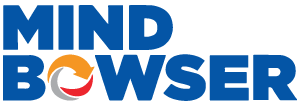The pace of digital transformation has significantly accelerated since the COVID-19 pandemic as organizations are looking at using digital technologies to transform their existing products and processes. Organizations are using digital transformation to rethink and reinvent their processes to stay relevant in today’s digital world and look for new ways to develop new business models and revenue streams that meet the customer’s expectations while staying competitive. To succeed in this effort, organizations must use a well-crafted digital transformation strategy that can deliver impactful outcomes for transforming and streamlining the processes. The digital transformation strategy provides a comprehensive framework for achieving long-term and short-term business goals, considering the users’ needs.
In this article, we will look at the key steps to build a digital transformation strategy and also look at some real success stories of organizations that have used digital transformation to achieve business growth.
A successful digital transformation strategy comprises several steps that help organizations achieve their business goals. The key steps include:
The fundamental step towards the digital transformation journey starts with clarifying the organization’s mission and vision. The mission defines the core purpose of the organization, the reason it exists, and what it aims to achieve. The vision, on the other hand, outlines a future state that the organization aspires to reach. These two elements provide the crucial direction and purpose for digital transformation efforts.
Digital transformation involves adopting technology and aligning technology initiatives with these mission and vision statements. It encourages organizations to assess whether their current mission and vision align with the changing landscape of their industry and customer expectations. Organizations should revise and adapt their mission and vision to ensure they remain relevant and guide the transformation efforts effectively. By doing so, organizations can set a clear and motivating framework for their digital transformation journey, ensuring that technology adoption serves a meaningful purpose in achieving their long-term goals and staying competitive in the digital age.
Assessing the current business strategies helps the organizations understand where they stand regarding their goals, operations, and market positioning. This assessment helps to highlight the areas that might benefit from digital transformation, including the enhancement of operational efficiency, improvement in customer experiences, and the expansion of market reach. This assessment allows organizations to align their business strategies with digital transformation goals.
Businesses must often adapt their strategies to accommodate the rapidly changing digital landscape. This can involve redefining core objectives, identifying new revenue streams, and reimagining customer engagement models. Organizations must be agile and willing to modify their approaches to remain competitive and seize new opportunities.
Assessing existing business strategies provides a baseline against which progress can be measured. It enables organizations to set clear, achievable objectives for their digital transformation efforts and to track their success in realigning business strategies with the evolving demands of the digital era.
In the rapidly evolving digital age, the skills and knowledge of your workforce play a pivotal role in driving the transformation process. By offering opportunities for upskilling and reskilling, you empower your employees to adapt to new technologies, tools, and methodologies. This ensures that your team remains relevant and competent and promotes a culture of continuous learning and innovation within the organization. A skilled and motivated workforce helps to drive innovation, improve customer experiences, and optimize operations, leading to organizations achieving their digital transformation goals.
Identifying priority projects as part of a digital transformation strategy involves a strategic and careful process aligned with organizational goals. Closely examining important business objectives helps identify which digital initiatives or projects directly support those objectives. This might include projects related to enhancing customer experience, improving operational efficiency, or opening new revenue streams.
It is important to strike the right balance between top-priority projects that are strategically significant and quick-win projects that yield visible results rapidly. Top-priority projects often require substantial investments of time and resources but have the potential to offer substantial long-term benefits. On the other hand, quick-win projects are relatively low-hanging fruit that can provide immediate value and build momentum for your digital transformation journey.
Close collaboration across different departments and levels of the organization helps to ensure that the selected projects align with the company’s vision, meet customer expectations, and are feasible within the allocated resources. Regular assessment and adjustment are essential to align the digital transformation strategy with the ever-evolving organizational goals and market dynamics.
Assessing and proactively addressing skills gaps is crucial to building a robust digital transformation strategy. In the rapidly evolving digital landscape, having the right talent and expertise is important for the growth and success of the organization. Identifying skills gaps allows an organization to understand where it currently stands regarding digital capabilities and where it needs to be. This assessment helps to build a targeted plan for upskilling, reskilling, or hiring to bridge those gaps.
Hiring individuals with the necessary digital skills or partnering with external experts can inject fresh perspectives and knowledge into the organization, driving innovation and competitiveness. Upskilling and reskilling existing employees addresses immediate skill shortages and boosts morale and retention. A well-defined plan ensures that the organization can drive and sustain its digital evolution effectively.
Exploring potential partnerships and acquisitions can be a solution to acquire the necessary skills and expertise that might not exist within the organization. These external collaborations can significantly expedite the transformation journey. Partnerships with other organizations allow for knowledge-sharing and pooling resources that possess complementary skills or technologies.
This can foster innovation and provide opportunities to access new markets. Conversely, acquisitions involve acquiring a company with the desired expertise or technology, which can be integrated into the existing operations. When considering partnerships or acquisitions, aligning the overall digital transformation goals and ensuring that the cultural fit and integration process is well-planned is essential.
Defining success metrics is critical in building a robust digital transformation strategy. It involves establishing clear and measurable goals to track the progress and outcomes of digital transformation projects. By specifying key performance indicators (KPIs) and success criteria, organizations can gauge the effectiveness of their efforts and ensure alignment with their primary objectives. Milestones are important checkpoints to evaluate progress at various stages of the transformation journey. They allow organizations to identify areas requiring adjustments or optimization and keep the project on track.
Impact assessment is equally important, as it helps understand how digital transformation initiatives affect the organization’s overall performance and customer satisfaction. Regularly evaluating success metrics, milestones, and impact assessment ensures that the digital transformation strategy remains adaptable and focused on delivering tangible benefits to the organization.
Privacy and data security should be top priorities for organizations in their digital transformation strategy, as breaches could have severe consequences. Ethical considerations extend to transparency in data collection and use, consent, and respecting individuals’ rights. To uphold ethical standards, organizations often establish ethics advisory boards or committees. These bodies guide ethical dilemmas, ensure compliance with regulations, and help set ethical boundaries for technology deployment.
Fostering an ethical mindset at all levels of the organization, emphasizing the importance of ethical decision-making, and creating a workplace environment where ethical behavior is encouraged and rewarded.
Selecting the right technology in the digital transformation journey is essential to align technological choices with broader strategic goals. Before choosing any technology, an organization must plan appropriately to understand what it aims to achieve through digital transformation. The planning can entail assessing the organization’s current state, defining specific objectives, and determining how technology can support those objectives. A clear vision of the desired outcomes through digital transformation can help organizations make the right and informed decisions about the technologies that best serve their needs.
The process of adopting a particular technology should not be done in isolation. Rather, it should be a means to achieve the organization’s strategic objectives. By aligning technology with broader goals, organizations ensure their digital transformation efforts have a purpose and direction. This alignment helps prevent the adoption of technologies that may not provide
value or may not integrate effectively into the existing infrastructure. Right technology selection should result from a well-considered strategy, ensuring that it contributes to the organization’s overall success in the digital age.
Several organizations have embarked on the digital transformation by reinventing their business models to achieve business goals. They have achieved great success in delivering innovative products and services to meet the evolving demands of their customers while remaining competitive in the digital age.
Netflix disrupted the traditional entertainment industry by shifting from physical DVD rentals to streaming services. They invested heavily in original content, global expansion, and personalized recommendations. Netflix’s use of big data analytics to understand viewer preferences and produce targeted content was a game-changer. They also invested in a robust content delivery network to ensure a seamless streaming experience.
Netflix’s recommendation algorithm, which analyzes user behavior and preferences to suggest content, played a pivotal role in keeping subscribers engaged. Their global content strategy was innovative, producing shows and movies catering to diverse audiences.
Amazon’s digital transformation was grounded in a customer-centric approach. It pioneered the use of customer reviews, one-click purchasing, and Prime membership, which offered fast shipping and streaming services. Data analytics for inventory management and predictive ordering helped Amazon optimize operations and reduce costs.
Amazon Web Services (AWS) emerged as a profitable venture by providing cloud computing services, turning Amazon into a technology infrastructure provider for other businesses. Amazon uses advanced automation and robotics in its warehouses, enhancing efficiency and speed in order fulfillment. This approach exemplifies the integration of technology into their operations.

A carefully crafted digital transformation strategy provides the roadmap for long-term success, helping organizations navigate the complexities of the process. It ensures that technology investments are aligned with the broader goals and objectives of the organization, allowing for sustainable growth and competitiveness.
Mindbowser, a trusted partner in the field of digital transformation, has helped organizations develop and implement their successful digital transformation strategies. Our expertise and experience in the digital transformation area have enabled organizations to achieve meaningful results and scale new heights through increased efficiency, enhanced customer experiences, and improved competitiveness. Mindbowser’s approach to gaining traction for a successful digital transformation implementation is characterized by in-depth analysis, cutting-edge technology integration, and a strong commitment to aligning digital initiatives.
The following principles of a digital transformation strategy guide organizations in developing a strategy that is responsive to the evolving digital landscape and capable of delivering sustainable benefits:
Digital transformation means using digital technology to improve business and customer experiences. It starts with understanding the current situation, setting digital goals, and making a plan that includes technology, process changes, and adapting the organization. To succeed, it needs a change in culture, good leadership, and ongoing innovation.
A Digital Transformation (DX) strategy is a detailed plan for using digital technology to improve a company’s operations, processes, and business model. It sets clear goals and steps to adapt to the digital age, increase efficiency, enhance customer experiences, and stay competitive. A good DX strategy involves creating a roadmap for using digital tech, rethinking business processes, and meeting customer expectations, all while considering the company’s long-term goals.
The six pillars of digital transformation represent the core elements that organizations need to address in their digital transformation efforts. These pillars are:
Leave your competitors behind! Become an EPIC integration pro, and boost your team's efficiency.
Register Here

The Mindbowser team's professionalism consistently impressed me. Their commitment to quality shone through in every aspect of the project. They truly went the extra mile, ensuring they understood our needs perfectly and were always willing to invest the time to...

CTO, New Day Therapeutics

I collaborated with Mindbowser for several years on a complex SaaS platform project. They took over a partially completed project and successfully transformed it into a fully functional and robust platform. Throughout the entire process, the quality of their work...

President, E.B. Carlson

Mindbowser and team are professional, talented and very responsive. They got us through a challenging situation with our IOT product successfully. They will be our go to dev team going forward.

Founder, Cascada

Amazing team to work with. Very responsive and very skilled in both front and backend engineering. Looking forward to our next project together.

Co-Founder, Emerge

The team is great to work with. Very professional, on task, and efficient.

Founder, PeriopMD

I can not express enough how pleased we are with the whole team. From the first call and meeting, they took our vision and ran with it. Communication was easy and everyone was flexible to our schedule. I’m excited to...

Founder, Seeke

Mindbowser has truly been foundational in my journey from concept to design and onto that final launch phase.

CEO, KickSnap

We had very close go live timeline and Mindbowser team got us live a month before.

CEO, BuyNow WorldWide

If you want a team of great developers, I recommend them for the next project.

Founder, Teach Reach

Mindbowser built both iOS and Android apps for Mindworks, that have stood the test of time. 5 years later they still function quite beautifully. Their team always met their objectives and I'm very happy with the end result. Thank you!

Founder, Mindworks

Mindbowser has delivered a much better quality product than our previous tech vendors. Our product is stable and passed Well Architected Framework Review from AWS.

CEO, PurpleAnt

I am happy to share that we got USD 10k in cloud credits courtesy of our friends at Mindbowser. Thank you Pravin and Ayush, this means a lot to us.

CTO, Shortlist

Mindbowser is one of the reasons that our app is successful. These guys have been a great team.

Founder & CEO, MangoMirror

Kudos for all your hard work and diligence on the Telehealth platform project. You made it possible.

CEO, ThriveHealth

Mindbowser helped us build an awesome iOS app to bring balance to people’s lives.

CEO, SMILINGMIND

They were a very responsive team! Extremely easy to communicate and work with!

Founder & CEO, TotTech

We’ve had very little-to-no hiccups at all—it’s been a really pleasurable experience.

Co-Founder, TEAM8s

Mindbowser was very helpful with explaining the development process and started quickly on the project.

Executive Director of Product Development, Innovation Lab

The greatest benefit we got from Mindbowser is the expertise. Their team has developed apps in all different industries with all types of social proofs.

Co-Founder, Vesica

Mindbowser is professional, efficient and thorough.

Consultant, XPRIZE

Very committed, they create beautiful apps and are very benevolent. They have brilliant Ideas.

Founder, S.T.A.R.S of Wellness

Mindbowser was great; they listened to us a lot and helped us hone in on the actual idea of the app. They had put together fantastic wireframes for us.

Co-Founder, Flat Earth

Ayush was responsive and paired me with the best team member possible, to complete my complex vision and project. Could not be happier.

Founder, Child Life On Call

The team from Mindbowser stayed on task, asked the right questions, and completed the required tasks in a timely fashion! Strong work team!

CEO, SDOH2Health LLC

Mindbowser was easy to work with and hit the ground running, immediately feeling like part of our team.

CEO, Stealth Startup

Mindbowser was an excellent partner in developing my fitness app. They were patient, attentive, & understood my business needs. The end product exceeded my expectations. Thrilled to share it globally.

Owner, Phalanx

Mindbowser's expertise in tech, process & mobile development made them our choice for our app. The team was dedicated to the process & delivered high-quality features on time. They also gave valuable industry advice. Highly recommend them for app development...

Co-Founder, Fox&Fork
